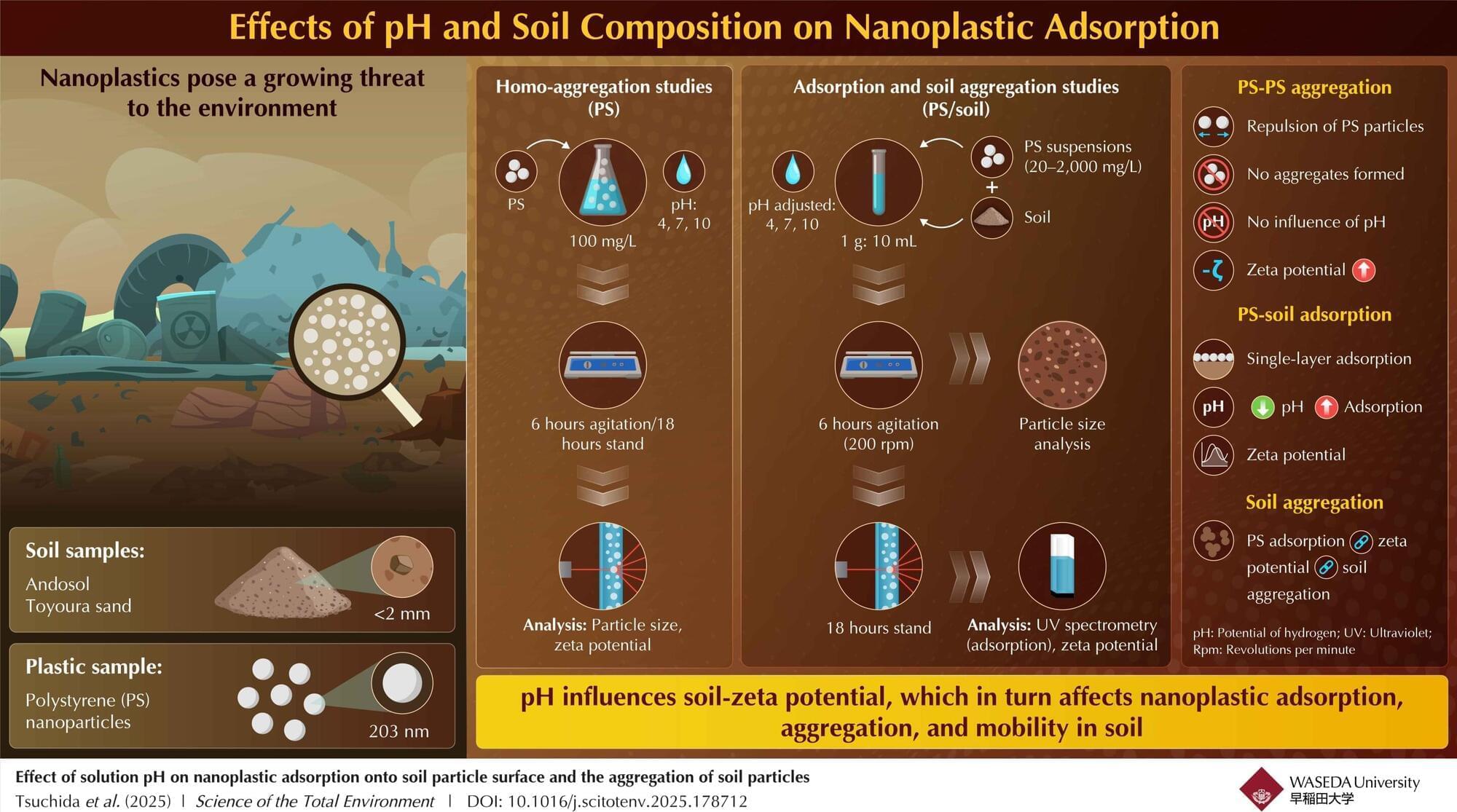Plastics are everywhere—from packaging and textiles to electronics and medical devices. As plastic waste breaks down, it releases microscopic particles that can penetrate our ecosystems, hinder plant growth, and potentially transfer harmful pollutants to organisms, including humans. Therefore, these plastic particles are a potential threat to the ecosystem, especially in their nanoparticulate form (1–100 nm diameter), which can penetrate the environment through different routes, including the soil beneath our feet.
With this in mind, a team of researchers from Japan set out to study the migration behavior of nanoplastics in different soil types. The study was led by Kyouhei Tsuchida, a Ph.D. student from the National Institute of Advanced Industrial Science and Technology (AIST) and Waseda University, Japan, with fellow students Yukari Imoto, Takeshi Saito, and Junko Hara also from AIST, and Professor Yoshishige Kawabe from the Department of Resources and Environmental Engineering, Waseda University. This study was published online in the journal Science of the Total Environment on April 4, 2025.
The researchers focused on the adsorption of the nanoplastics on soil and the aggregation characteristics of both the nanoplastics and soil particles under varying pH conditions. “The aggregation properties of nanoplastics and their adsorption onto soil particle surfaces are known to affect their migration in soil,” notes Tsuchida. “We conducted experiments to analyze these traits to get a better understanding of the migration of nanoplastics.”
